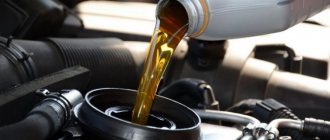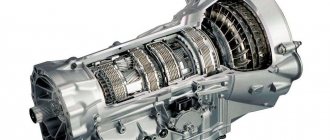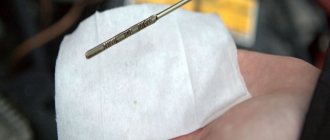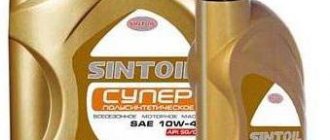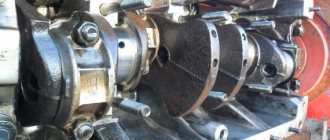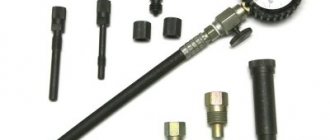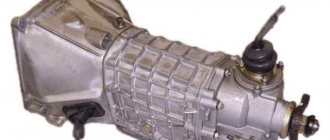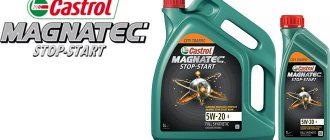While the engine is running, every motorist ensures that the oil level in the engine is at the optimal level. But sometimes the car owner begins to notice that the lubrication in the engine begins to decrease. At the same time, the thought immediately comes to mind that the engine begins to eat engine oil, and this process should be accompanied by strong smoke from the exhaust gases.
But sometimes a decrease in the volume of lubricant may not be accompanied by exhaust smoke. Therefore, in this article we will look in detail at where the oil goes from the engine if the car does not smoke.
Where does the engine oil go if the car doesn't smoke?
To answer this question, you need to study in detail all the places in the engine through which oil can leak. For this, a white sheet of paper is best suited, which should be left under the engine overnight. The next morning, by the location of the spots on the surface of the paper, you can determine the place where the leak is coming from.
It should be remembered that you need to focus on the yellow spots. After all, if the oil spots are red, then this is most likely a lubricant leak from the automatic transmission or power steering.
If no stains are found on the sheet, you need to look for leaks in the most likely areas:
You need to carefully inspect the gasket under the valve cover. If there are clear oil streaks on the outer surface of the engine, then we can assume that the problem has been found. To solve the problem, you need to replace the gaskets under the valve covers or apply sealant.
Inspection of the pan gasket. This gasket may be worn. The solution to the problem is to replace the gasket. In this case, it is important to purchase a gasket that, according to the catalog, fully matches a specific car. It is not recommended to install gaskets from another car, especially one with signs of wear. Otherwise, the oil leak story may soon repeat itself.
Penetration of the pallet body when hitting a solid obstacle. In such a situation, you either need to replace the entire pan or, if the hole is not very large, you can try to weld it. You cannot use various cold welds to eliminate the leak. Indeed, under the influence of oil pressure, such temporary sealants do not provide a long-term effect and lead to repeated failure, during which a significant amount of oil is lost.
Oil seal failure. You need to immediately pay attention to the condition of the front oil seal mounted on the crankshaft. The seals located on the camshaft can also leak. It is very difficult to visually verify that the seal is leaking. It must be remembered that the main sign of oil leakage through the oil seal may be their strong fogging and excessive oiling of the place where they are attached. If the cause of the leak is in the oil seal, it needs to be changed as quickly as possible, since engine oil can get through worn oil seals onto other engine parts.
Lubricant may be leaking from the oil pressure sensor. In this case, you need to carefully tighten the sensor using a wrench. Perhaps the sensor is not screwed in correctly at all and has a technical defect. As for sensors, to avoid a similar situation, you need to purchase only original sensors and under no circumstances run for a low price. Otherwise, you can buy a Chinese fake of low quality and a bunch of future problems.
Good to know: Oil pressure at idle speed when hot is what it should be
Oil may be leaking through an oil filter that has a defective housing or is simply not tightened tightly enough. In many cars, the oil filter is installed at the bottom of the pan and can be damaged if it hits a hard object. Sometimes, the thread in the filter may simply be torn off, which prevents it from being tightened tightly enough.
The camshaft plug also deserves close attention, especially for engines with two camshafts and no distributor. Here, oil may leak out through the O-ring. In such a situation, you need to replace the plug itself. It can be made of plastic and rubber. Both options are quite acceptable, but the rubber plug will last longer. Although in practice, replacing the plastic plug is faster and easier.
Lubricant can leak through a damaged distributor o-ring. To eliminate the leak, you need to replace the O-ring and re-adjust the OZ.
Good to know: What happens if you pour oil into the engine?
It is much more difficult to eliminate a leak if oil gets into the distributor itself. The main sign of the presence of oil in the distributor is a specific crackling sound similar to the crackling sound of a bearing. To correct this situation, it is necessary to disassemble the distributor itself, clean it and replace the bearing with the seal.
How to fix the problem?
We figured out why fluid leaves the engine, now let's talk about how to solve this problem. Below we will discuss solutions to the most common faults. In all these cases, you will need a set of wrenches and a quality sealant.
If there is a leak from under the valve cover
If the oil leaks for this reason, then the problem can be solved on your own. This problem is one of the most common. To solve it, you need to:
- Open the hood and remove the valve cover.
- Wash it with acetone or kerosene, thoroughly wash away all traces of drips so that you can determine the result of the work.
- Take the sealant and coat the lid gasket well so that it fits tightly.
- After this, mount the cover in place and take a test drive. Check the result.
Leakage of consumables from under the valve cover
If it is leaking from under the oil filter
- Remove the filter element if oil leaks due to it.
- Visually assess its condition. Perhaps there are visible signs of mechanical damage on it or it is broken, resulting in a leak of consumables.
- If the filter really looks bad, then you should replace it with a new one.
- If everything is in order with the filter, then dismantle it and lubricate the rubber part of the element with a drop of MM, then install it in place. Tighten it tighter - usually after this the problem disappears.
Summarizing
As you can see, there are a fairly large number of answers to the question of where the engine oil goes if the car doesn’t smoke. But in order to find exactly the place through which the oil is leaking among all the probable causes, you need to conduct a thorough inspection of the engine. In this case, you can do some of the work yourself, and in some cases you need to contact service station specialists. After all, without certain equipment, oil removal may not be found.
You cannot put off solving this problem for a long time, gradually adding oil to the engine to the optimal level. After all, the car owner has no idea where the poured oil leaks and where it can cause a breakdown.
Good to know: Engine oil level, how to measure correctly
And all motorists are well aware of the cost of engine overhauls. In addition, we must not forget about vehicle safety, where any breakdown can lead to an accident.
Using fake low quality oil filters
The problem of counterfeit products is especially relevant during the winter period of operation or the engine break-in period. First of all, counterfeits use low-quality materials for the filter layer, rubber seal and bypass valve elements.
One of the noticed defects that catches the eye after the oil filter has been squeezed out is a violation of the geometry of the box:
- swollen sides of the body;
- extruding the cover with a threaded bushing “into the dome”;
- deformation and extrusion of the valve rubber.
You can easily determine the quality of the oil filter by blowing into the inlet hole. In a fake, the weak valve petal will easily open; in the original product, it will not be possible to overcome the valve resistance by simply exhaling. In addition, it is worth paying attention to the condition of the filter “accordion” and the rubber ring of the seal.
If the edges of the paper are folded unevenly or are unevenly colored, metal burrs are visible inside the central core - this is a fake. It is worth paying special attention to the elastic band. The height of the ring above the surface of the lid should not be more than 0.8 mm; the material is quite elastic and rigid, but not hard. Soft rubber will not withstand high pressure - it will instantly deform and be squeezed out of the groove.
A characteristic feature of VAZ cars is the tendency for the pressure relief valve on the engine oil pump to jam. This often happens due to dirt getting into the lubricant or engine overheating. Therefore, if there are repeated episodes of lubricant leakage, do not puzzle over why the oil filter is being squeezed out, but clean and adjust the operation of the pump.
Video about what to do if the oil filter gasket is pressed out:
Let's start with the fact that the lubrication system of an internal combustion engine is closed. The lubricant circulates through special channels in the BC and cylinder head under a certain pressure, and oil is also supplied to some parts by splashing or by gravity.
Next, we will look at what the driver should do if the engine is in oil, what is the cause of such a malfunction, and also how to find an oil leak from the engine in cases where it is not possible to quickly localize the problem area or element.
Read in this article
Causes of oil leakage
A common cause of leakage is wear on the pistons and motor. When turned on, exhaust gas enters the crankcase and passes through the piston rings. When the engine wears out, the gas will create pressure, which leads to oil leakage. Other causes of oil leakage include:
- Oil sensor failure. It reads the oil volume and is connected using gaskets. When the gasket wears out, oil will slowly drip out.
- When the filter is loosened, free space appears between the bolts, leading to leakage.
- Leaking seals. Oil seals are responsible for sealing. When they break, oil begins to leak.

